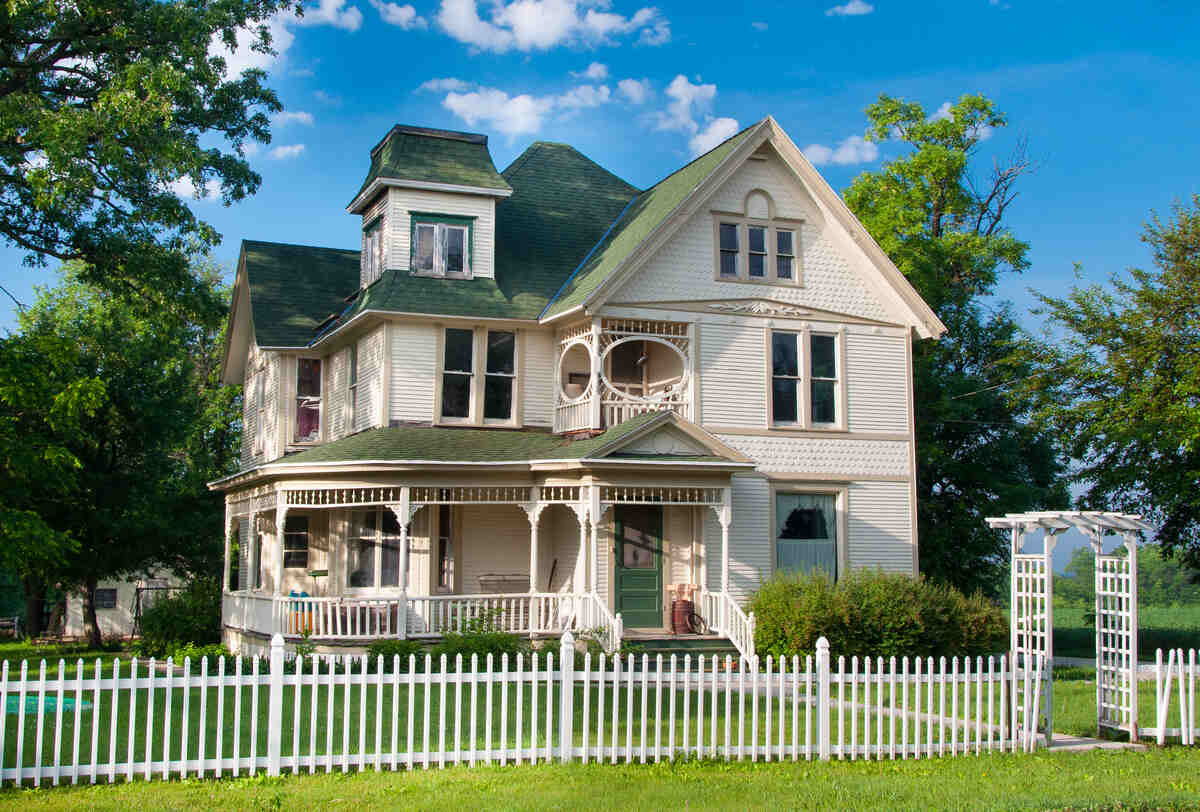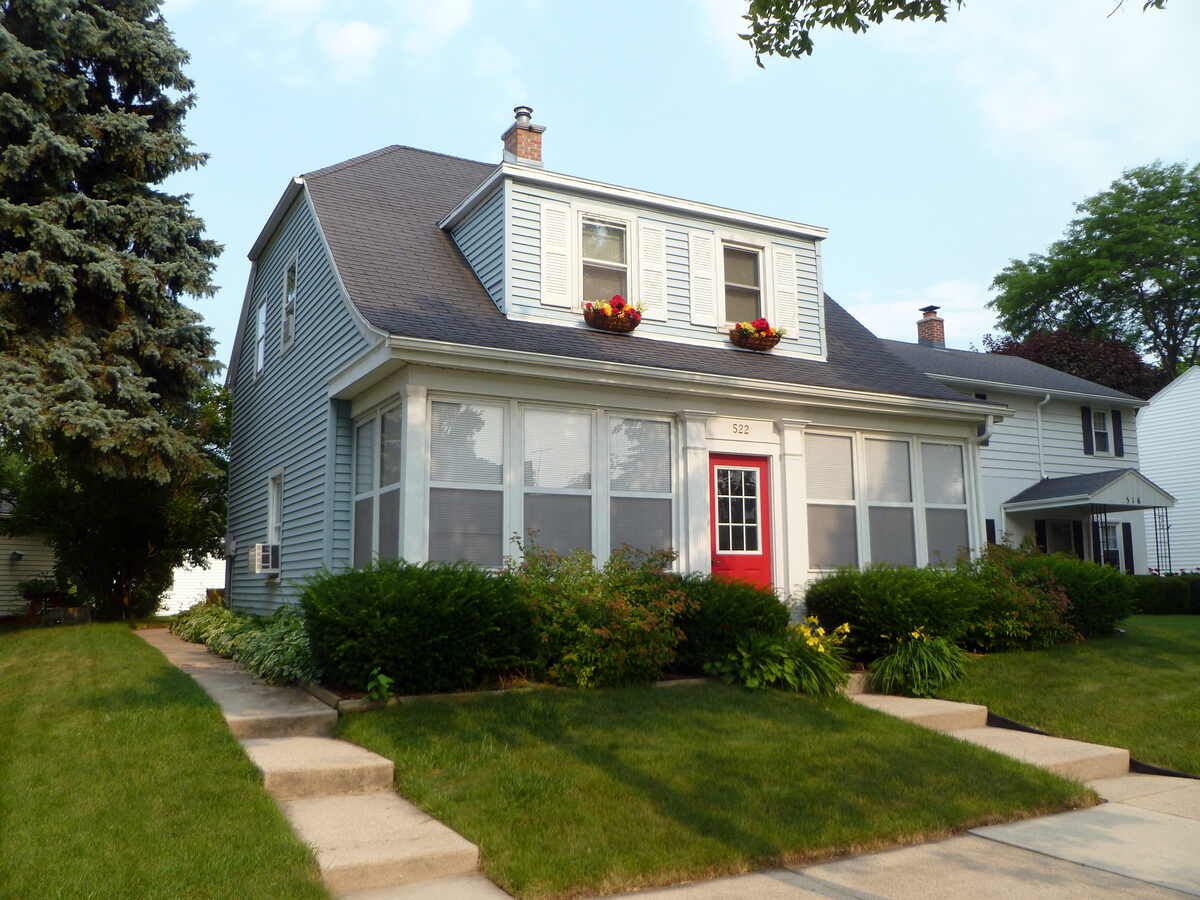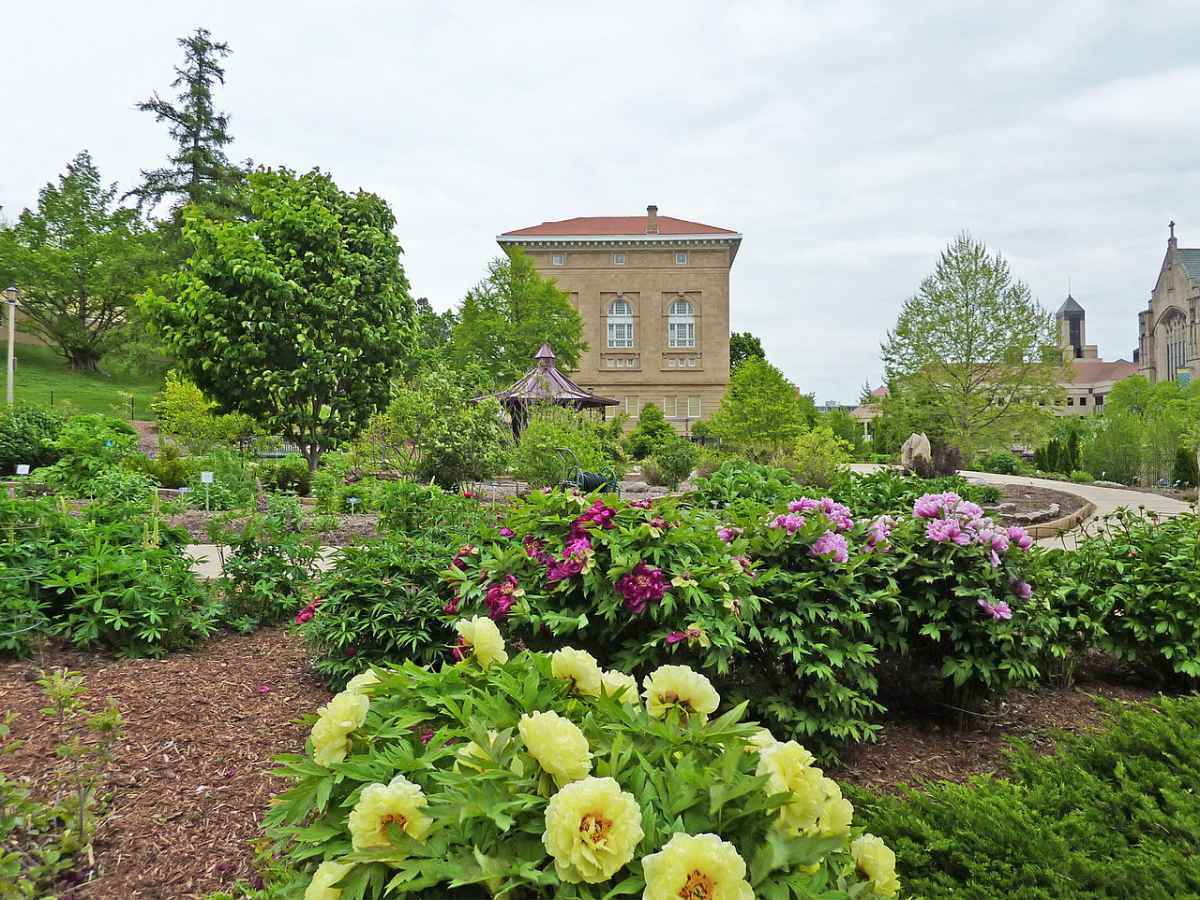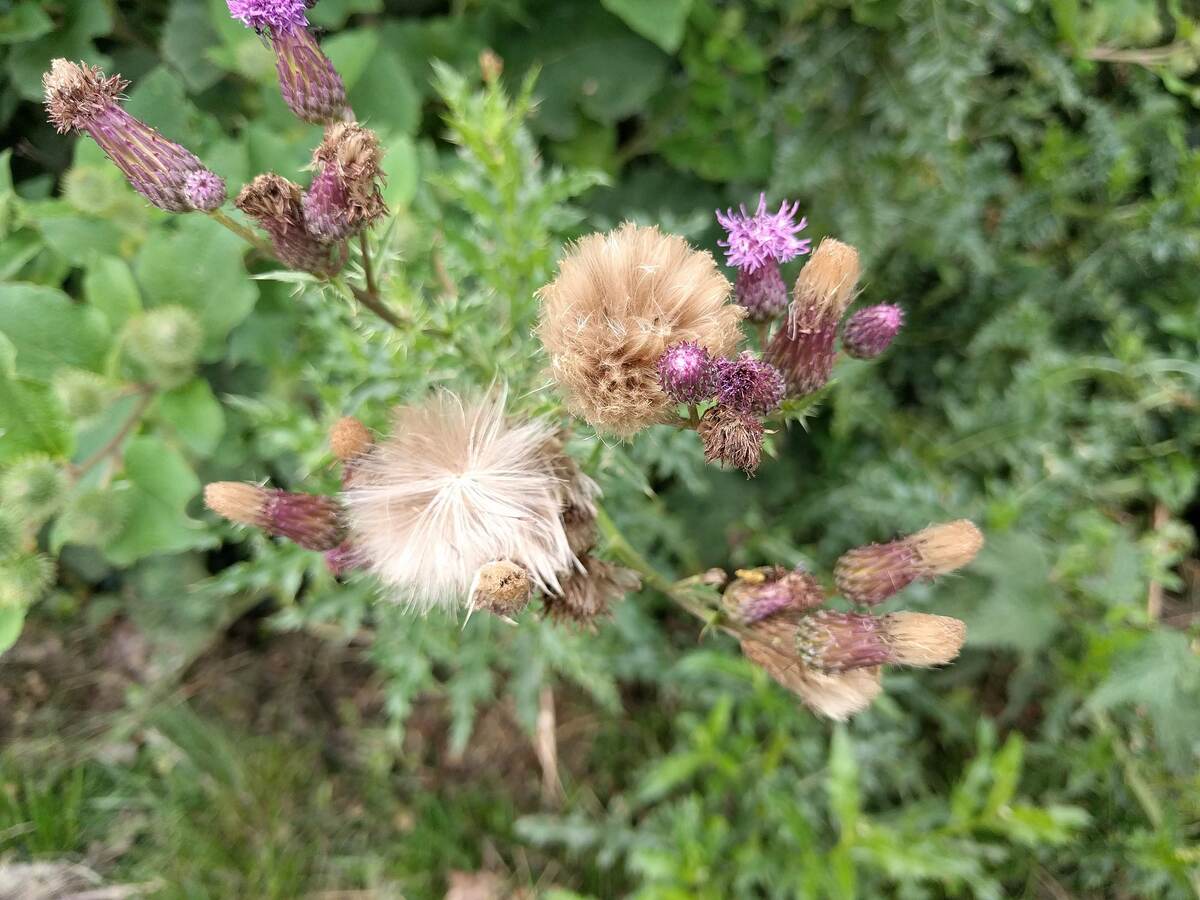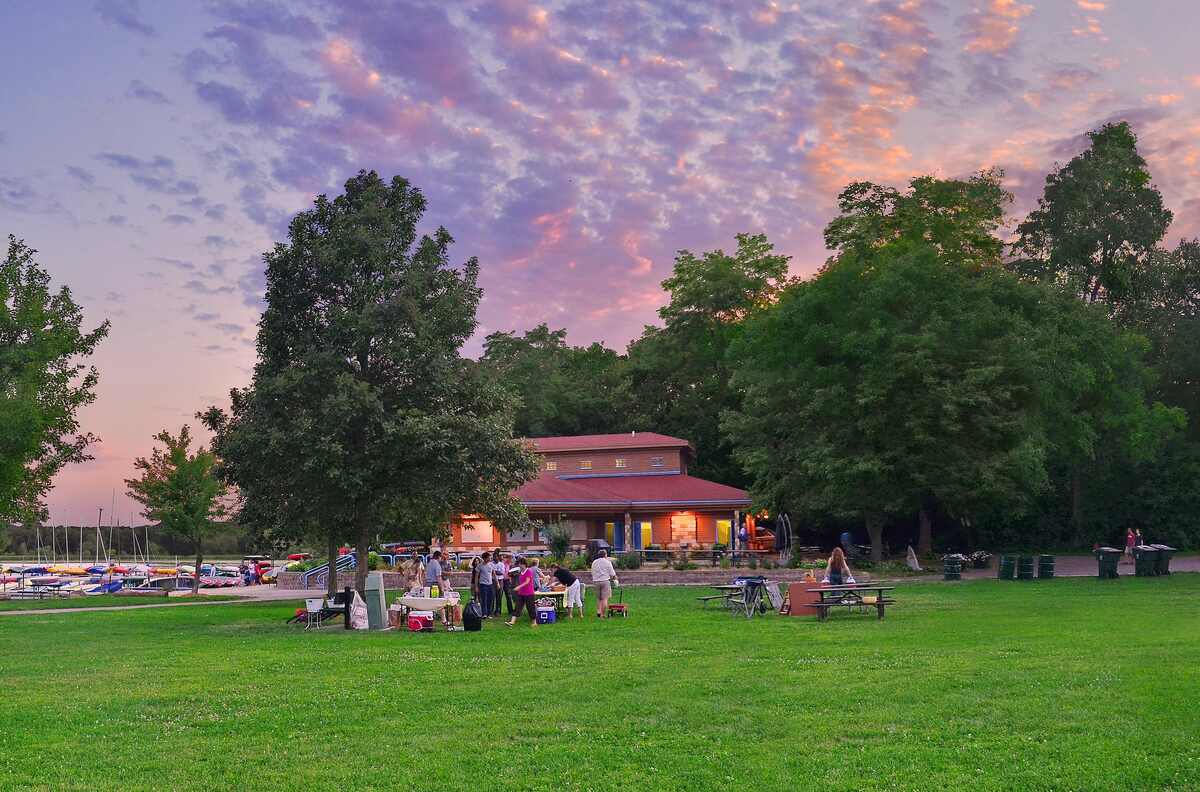
If you’re a homeowner, you know that choosing the best grass types for Madison is crucial due to the city’s constantly changing weather. With a humid continental climate that bounces between 90 degrees and well-below-freezing temperatures annually, selecting a grass variety that can withstand this kind of stress is essential.
This article will look at the top four grass types built to be plush and healthy in Madison’s climate. We’ll also discuss each variety’s shade and drought tolerance, maintenance needs, and recommended mowing height.
And later, we’ll explain how to choose the best grass type for your Madison lawn.
1. Kentucky Bluegrass
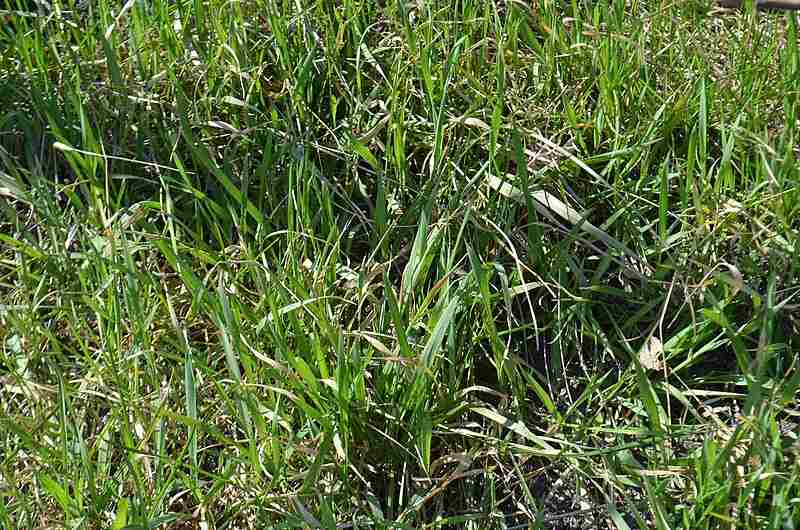
Photo Credit: Ethan2039 / Wikimedia Commons / CC BY-SA 4.0
Many people consider Kentucky bluegrass to be an ideal lawn. This grass type tends to keep its blue-green color in the winter and resists heat and drought in the summer. Kentucky bluegrass is also known for its dense, thick lawn, growing well in the northern regions from the Pacific to the Atlantic.
However, it’s important to note that Kentucky bluegrass has high maintenance needs, requiring regular watering, fertilization, and mowing. Despite this, it has an excellent capacity for self-repair and is highly resilient.
- Classification: Cool-season grass
- Spreads by: Rhizomes
- Shade tolerance: Low
- Drought tolerance: Moderate
- Foot traffic tolerance: Moderate
- Maintenance needs: Moderate mowing frequency and high fertilization needs.
- Mowing height: Set mowing height between 2.5 and 3.5 inches.
- Potential for disease: Moderate to high; prone to several diseases, such as dollar spot, leaf spot, necrotic ring spot, summer patch, and stripe smut.
- Soil pH: 6-7.5
- Soil type: Performs best in well-drained, heavy soils with high fertility.
Other notes: Kentucky bluegrass has a higher traffic tolerance during warm weather than in colder seasons.
Grass Seed Options:
– Jonathan Green (11970) Blue Panther Kentucky Bluegrass Grass Seed (3 lbs.)
– SeedRanch Midnight Kentucky Bluegrass Seed (5 lbs.)
– Jacklin Seed – Biltmore Blue Blend – 100% Kentucky Bluegrass (5 lbs.)
2. Perennial Ryegrass
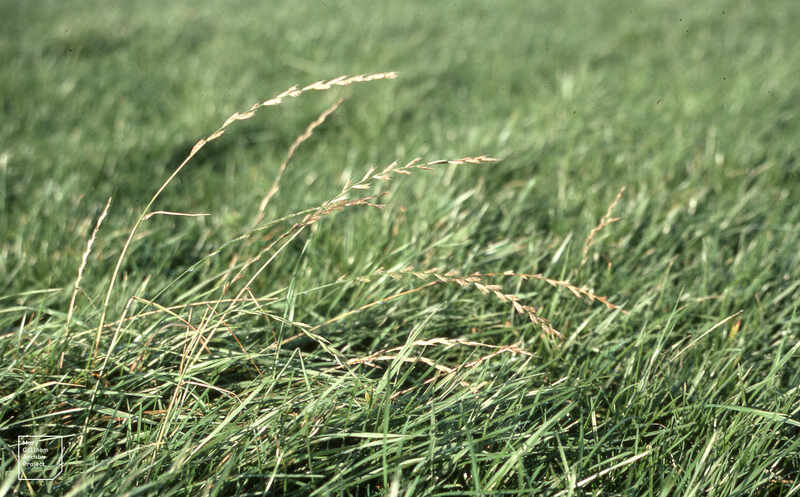
Photo Credit: Dr Mary Gillham Archive Project / Flickr / CC BY 2.0
Perennial ryegrass is the first to green when the snow melts, making it a faster-growing lawn. It’s a great grass choice for erosion control, and its darker color peaks in the cooler months. You’ll often find it mixed with other grass species because of its quick germination that helps to control erosion and weeds while the other, slower-growing grasses start to grow.
It’s worth noting that while perennial ryegrass has good cold tolerance, its heat and drought tolerance varies by variety. So, choosing the right type for the specific climate conditions in Madison is essential. Another downside of perennial ryegrass is that it can appear patchy, and bare spots must be regularly re-seeded since they won’t fill in on their own.
- Classification: Cool-season grass
- Spreads by: Has a bunch-type growth habit
- Shade tolerance: Low
- Drought tolerance: Low
- Foot traffic tolerance: High
- Maintenance needs: Moderate mowing and fertilization requirements. Thatch is not significant.
- Mowing height: Set mowing height to 1.5 to 2.5 inches
- Potential for disease: High. Common diseases include gray leaf spot, red thread, and leaf spot/melting-out.
- Soil pH: Can grow in soils with a pH between 5 and 8, but prefers between 6 and 7.
- Soil type: Prefers good drainage and fertility, but can tolerate some poor drainage.
Other notes: Producing neither rhizomes nor stolons, you will need to seed or lay sod on the entire area of your lawn to grow this grass.
Grass Seed Options:
– Outsidepride Perennial Ryegrass Seed (5 lbs.)
– Eretz ProTurf Perennial Ryegrass Fine Lawn Seed (choose your size)
3. Tall Fescue

Tall fescue is another grass type that grows well in Madison. It has an improved heat tolerance compared to other cool-season grasses. It is also disease-resistant, making it a low-to-moderate-maintenance option for homeowners.
Tall fescue is more coarse in texture, making for a more dense turf that is considered a very versatile grass. With a medium to dark green hue and a finer leaf, tall fescue appears more bunched than other grass types.
- Classification: Cool-season grass
- Spreads by: Produces short rhizomes but has a bunch-type growth habit
- Shade tolerance: Moderate
- Drought tolerance: Moderate to High
- Foot traffic tolerance: Moderate
- Maintenance needs: Frequent mowing. Does not produce significant thatch.
- Mowing height: Set mowing height to 2 inches when grass reaches 3 inches tall.
- Potential for disease: Tolerant of most diseases when properly maintained.
- Soil pH: 5.5-6.5
- Soil type: Adapted to a wide range of soil conditions, but prefers fertile clay soils with good drainage.
Other notes: Tall fescue can dominate other grasses in a mixed-grass environment.
Grass Seed Options:
– Triple-Play Tall Fescue Grass Seed Blend (5000 sq ft)
– Eretz Kentucky 31 K31 Tall Fescue Grass Seed (choose your size)
– Pennington The Rebels Tall Fescue Grass Seed Mix (7 lb.)
4. Fine Fescues
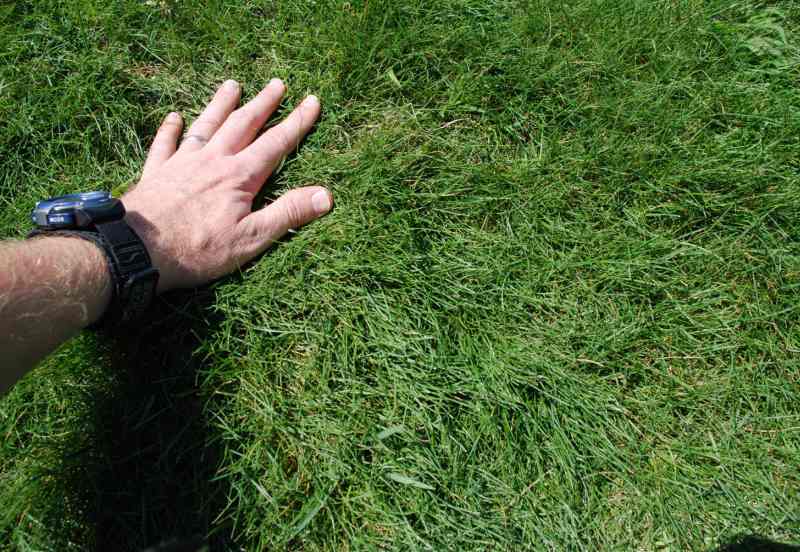
Fine fescues are one of the best cool-season grasses to grow in Wisconsin, particularly due to their extreme resistance to winter freezes and ability to grow well in various soil types. They have a fine leaf texture with a blue-green color, and there are multiple species available to choose from, each with its own unique characteristics.
Fine fescues are also known for their ability to form dense turf and their low-maintenance requirements. With the right care and maintenance, fine fescues can make for a beautiful and durable lawn option in Madison.
- Classification: Cool-season grass
- Spreads by: Creeping red fescue spreads by rhizomes, while other fine fescues are bunch-type grasses, such as Chewings, hard, and sheep fescues.
- Shade tolerance: Moderate to High, depending on species
- Drought tolerance: Moderate to High, depending on species
- Foot traffic tolerance: Low to Moderate, depending on species
- Maintenance needs: Low fertilizer and mowing needs
- Mowing height: Set mowing height between 2.5 and 4 inches, depending on species.
- Potential for disease: Moderate. Common diseases include red thread, leaf spot, dollar spot, summer patch, and powdery mildew.
- Soil pH: 6-6.5
- Soil type: Will not perform well in wet soil conditions. Prefers drier soils and tolerates a wide range of soil types and fertility.
Other notes: Varieties include hard fescue, chewings fescue, creeping red fescue, and sheep fescue
Grass Seed Options:
– Outsidepride Legacy Fine Fescue Grass Seed (5 lbs.)
– Eretz Creeping Red Fine Fescue Seed (choose your size)
– Outsidepride Creeping Red Fine Fescue Grass Seed (25 lbs.)
– Outsidepride Hard Fine Fescue Grass Seed (10 lbs.)
How to Choose the Best Grass Type in Madison
The variety of grass types available can make choosing the perfect one for your Madison lawn daunting. It’s important to remember that there is no one-size-fits-all solution, and the ideal grass type will depend on several factors, such as:
Shade Tolerance
Understanding the sunlight requirements of different grass varieties can help you choose the best type for your specific lawn. While some types need full sunlight to thrive, others might do well with partial shade. Fine fescues usually have the highest shade tolerance, in particular chewings red fescue.
Wear Tolerance
Understanding the traffic requirements of different grass species can help you choose the best type for your specific needs, especially if you have kids or pets at home or like using your backyard for sports. In Madison, the best grass type for high-traffic areas is perennial ryegrass.
Maintenance
It’s important to consider the amount of time and effort you are willing to invest in its maintenance. If you have a busy schedule or simply don’t want to spend a lot of time tending to your lawn, it’s better to go for low-maintenance grasses like fine fescues.
Bring in the Pros
The cooler-than-normal weather in Madison complicates choosing a grass for your lawn. Still, any of the four best grass types above should serve you well — green nearly all year and generally easy to maintain. Need help preparing your lawn? Visit our Madison lawn care page to get in touch with a professional.
LawnStarter participates in the Amazon Services LLC Associates Program, an affiliate advertising program. LawnStarter earns revenue from products promoted in this article.
Main image credit: Richard Hurd / Flickr / CC BY-ND 2.0
